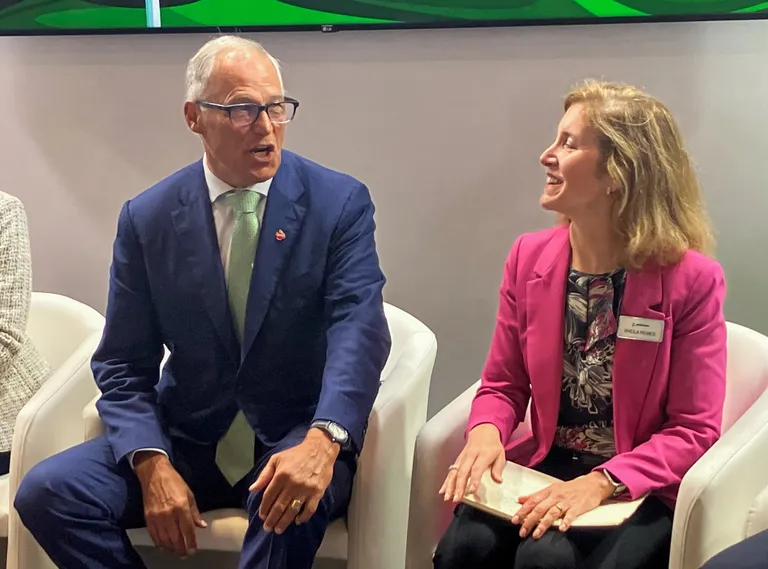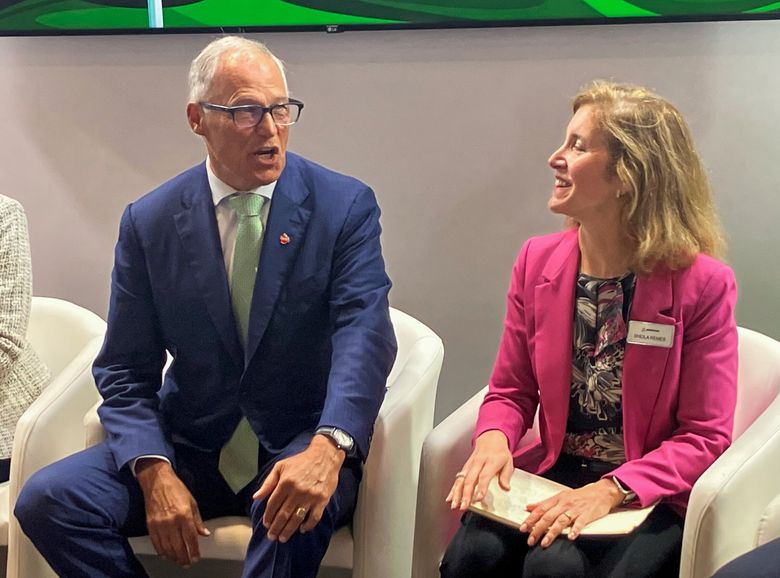For the first time since the pandemic, the Paris Air Show returned to Le Bourget last month with a focus on air travel’s next great challenge: sustainability.
Washington state should get ahead of the competition by creating incentives for the development of sustainable aviation fuel, or SAF, with infrastructure grant programs and even more aggressive tax credits than we already have.
The aviation industry aims to decarbonize commercial flying by 2050, and Washington state is taking advantage of its existing aerospace infrastructure to become a leader in developing the technology needed to get us there.
At Le Bourget, Gov. Jay Inslee announced the carbon transformation startup Twelve plans to open a commercial-scale facility in Moses Lake to create jet fuel from green hydrogen. Inslee also announced a state grant to help hydrogen-electric aircraft developer ZeroAvia expand its site at Paine Field.
These are exciting developments, but they’re not coming fast enough. Twelve will not begin flights until next year and ZeroAvia hopes to have a commercial flight with up to 20 seats by 2025 and one with up to 80 seats by 2027.
That adds up to a handful of flights several years down the line, meanwhile there were 40.3 million global flights in 2020.
Also, Boeing plans to have commercial planes certified to fly on 100% sustainable fuels by 2030 and Airbus aims to deliver its first hydrogen-powered plane by 2035. But the world’s airplane fleet is set to double in the next two decades and most of those jets will run on conventional fuel.
Despite talk about decarbonizing by 2050, the industry’s emissions are actually projected to triple by that time.
At the air show, total orders reached 1,303 aircraft worth $72.4 billion. One sustainability expert in attendance questioned how such sales numbers can be reconciled with all this talk of going green.
There are other skeptics too. In fact, 32% of aviation sustainability officers say the industry will not meet the 2050 target, according to a GE Aerospace Survey.
Europe has required that 70% of airline fuel be sustainable by 2050, but the U.S. has decided to nudge rather than push. In 2020, President Joe Biden introduced the first-ever SAF tax incentives in the Inflation Reduction Act.
In April, Inslee signed Senate Bill 5447 into law, creating policy and per-gallon incentives for the production and use of SAF. But it hasn’t been enough.
At the air show, Universal Hydrogen announced it is leaving Washington for California.
The state needs domestic facilities, ideally located near Seattle-Tacoma International Airport, which can convert local waste feedstocks into SAF. Investing in upstream infrastructure now will have enormous returns as the industry continues to transition.
Washington state has taken a big step in the right direction, but we’ve only just left the starting blocks.

